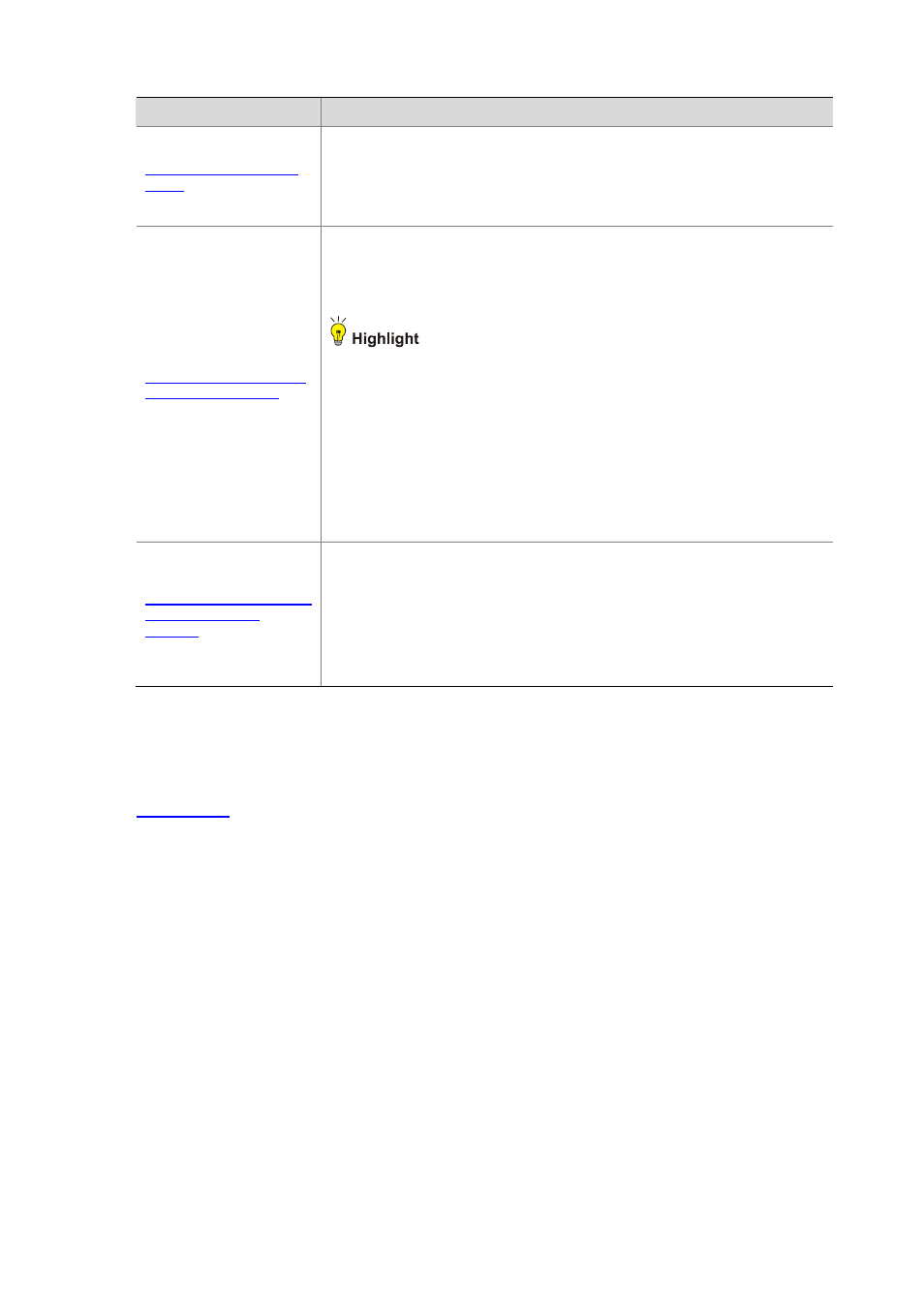H3C Technologies H3C WX6000 Series Access Controllers User Manual
Page 212

26-17
Task
Remarks
Required
To improve reliability, you can specify several DHCP servers as a group on the
DHCP relay agent and correlate a relay agent interface with the server group.
When the interface receives requesting messages from clients, the relay agent
will forward them to all the DHCP servers of the group.
Enabling the DHCP Relay
Agent on an Interface
Required
Enable the DHCP relay agent on an interface, and correlate the interface with a
DHCP server group.
With DHCP enabled, interfaces work in the DHCP server mode by default.
An interface cannot serve as both the DHCP server and the DHCP relay
agent. The latest configuration takes effect.
If the DHCP relay agent is enabled on an Ethernet subinterface, a packet
received from a client on this interface must contain a VLAN tag and the
VLAN tag must be the same as the VLAN ID of the subinterface; otherwise,
the packet is discarded.
The DHCP relay agent works on interfaces with IP addresses manually
configured only.
If an Ethernet subinterface serves as a DHCP relay agent, it conveys IP
addresses only to subinterfaces of DHCP clients. In this case, a PC cannot
obtain an IP address as a DHCP client.
Configuring and Displaying
Clients' IP-to-MAC
Bindings
Optional
Create a static IP-to-MAC binding, and view static and dynamic bindings.
The DHCP relay agent can dynamically record clients’ IP-to-MAC bindings after
clients get IP addresses. It also supports static bindings, that is, you can manually
configure IP-to-MAC bindings on the DHCP relay agent, so that users can access
external network using fixed IP addresses.
By default, no static binding is created.
Enabling DHCP and Configuring Advanced Parameters for the DHCP Relay Agent
Select Network > DHCP from the navigation tree to enter the default DHCP Relay page shown in
. Enable or disable DHCP in the DHCP Service field. Click Display Advanced
Configuration to expand the advanced DHCP relay agent configuration field.
